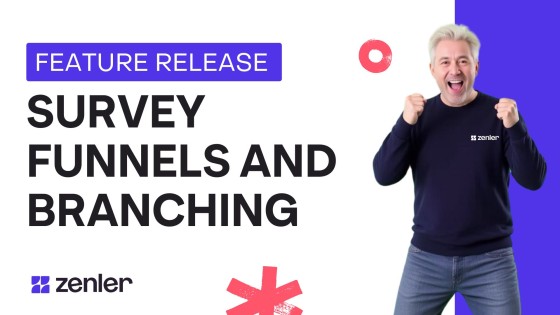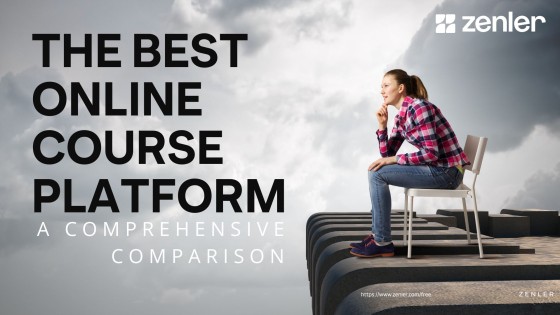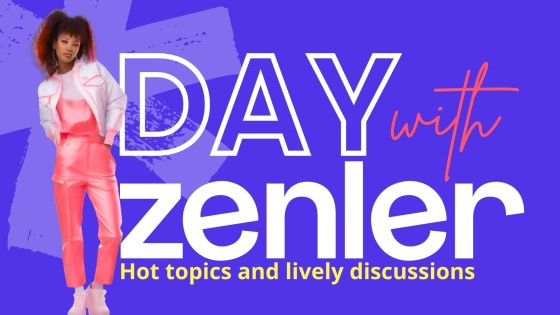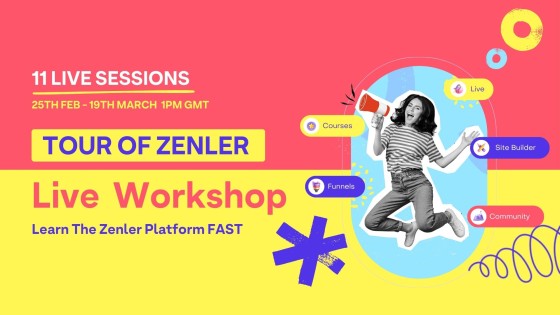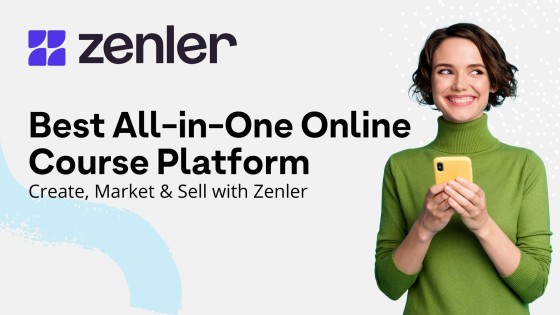Lead Generation: Power Up Your Marketing with Zenler
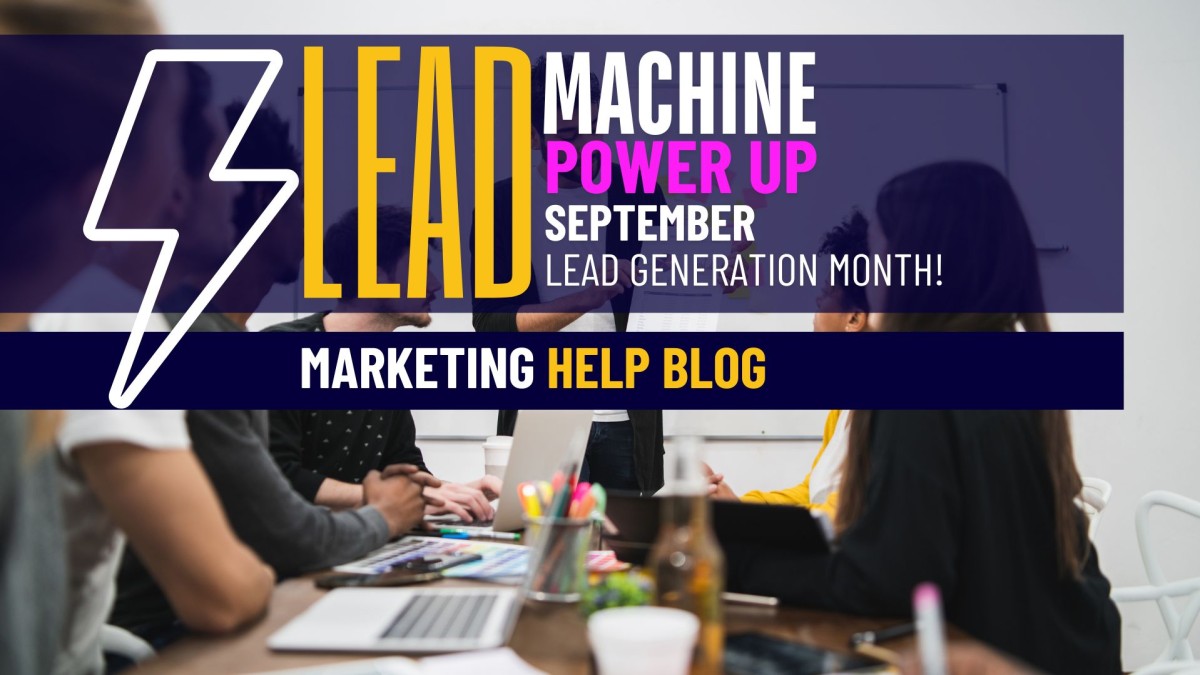
Welcome to Lead Generation Month September 2024. We share actionable strategies and insights that help you generate more leads for your business.
Each session is packed with tips, tools, and real-life examples to empower you in attracting your ideal clients.
Whether you're just starting or looking to refine your approach, these live sessions are designed to provide you with the knowledge and support you need to succeed.
To See all the videos visit and subscribe to our YouTube channel: https://www.youtube.com/playli...
Create an Irresistible Offer: 3rd September 2024

What Is a Lead Magnet?
Think of it like a taster at a sweet shop. Before committing to a purchase, you get a small sample to entice you. Similarly, a lead magnet offers potential clients a glimpse into your world, enticing them to explore your products or services further.
To create an irresistible lead magnet, you need to consider three essential factors:
- Identify the Pain Point: What problem are you solving for your customers?
- Outline the Delivery Steps: What are the key steps in your process? For example, if you're an art coach helping clients relieve stress through art, your process might involve:
- Starting with a drawing board
- Selecting exciting colours and paints
- Conducting group painting sessions
- Offering one-on-one consultations
- Incorporating meditative practices
- Make Step One Your Lead Magnet: The first step in your delivery process should be your lead magnet. If you can solve even a small part of your customer's problem, they will be more inclined to buy into your larger offering.
Examples of Successful Lead Magnets
In one of our previous marketing workshops, we worked with Hazel, a Zenler user who helps pet parents train their dogs. We brainstormed her lead magnet and discovered that a common pain point for pet parents is excessive barking. So, we crafted a lead magnet titled "How to Make Your Dog Stop Barking in Seven Days."
This title is effective because it:
- Clearly indicates a problem with a solution (how to stop barking).
- Adds a sense of urgency and curiosity by including a timeline (in seven days).
Utilizing ChatGPT for Lead Magnet Ideas
To illustrate the process further, we used ChatGPT to generate lead magnet ideas. By providing the problem statement—"I help busy entrepreneurs feel relaxed"—and outlining the steps in our delivery, we were able to create compelling lead magnet titles such as:
- "How to Reduce Entrepreneurial Anxiety in Seven Days."
- "How to Achieve Work-Life Balance Without Compromising Your Ambitions."
- "How to Improve Your Mental Clarity Without Spending Hours in Meditation."
These titles address the pain points of potential clients and provide an irresistible offer that encourages them to opt into your lead magnet.
Watch the full episode here
Create a Landing Page: 6th September 2024

A lead magnet entices your target audience to opt into your email list, but it only works if presented well. This is where a landing page comes in. The page's design and messaging can make or break your opt-in rates. Let's walk through the key elements of creating a landing page that will help you capture leads more effectively.
Structuring Your Landing Page
A landing page should be simple and to the point, focusing on converting visitors. Here’s how to structure it:
1. Above the Fold
This is the most critical section—what the visitor sees before scrolling. In this space, include:
- Pain Point: Clearly state the problem you're solving.
- Target Audience: Who is this offer for?
- Title and Offer: A strong headline and the description of your lead magnet.
- Opt-In Form: Make sure the form is visible right away.
For example, if you're offering a free guide on how to grow your email list, the headline could read: "Boost Your Email List by 300% with These Simple Hacks—Download Your Free Guide Now!"
2. Middle Section
Here, explain in more detail why visitors should opt-in. Share the value of what they’ll receive, such as tips, tools, or exclusive content. This section gives you the chance to highlight key benefits.
3. Below the Fold
The final part of your landing page should be a reminder of what the lead magnet offers and how it solves a specific problem. This reinforces your message and encourages visitors to take action if they haven’t already.
Tutorial on How to Create a Landing Page
In this episode, you will find a step-by-step guide where Hazel creates her landing page in less than 15 minutes using my instructions.
Using online course platforms like Zenler, you can create a landing page quickly. I’ve provided three templates to help you get started in minutes, designed to keep things simple and focused on your main call to action.
Link to codes and templates
Watch the full episode here
Learn Facebook Outreach: 8th September 2024

Understanding Lead Generation Methods
There are two primary methods for generating leads:
- Inbound - Leads come to you.
- Outbound - You reach out to potential leads.
Today, we will learn how to employ outbound strategies to attract leads.
Time vs. Money in Lead Generation
When starting your business, you have two currencies to consider: time and money. If you have more money, consider investing in ads like Facebook or Google Ads. If you have more time, focus on strategies like SEO or Facebook outreach.
For this session, let’s assume you have time to invest and a clear understanding of your target customer.
The Facebook Outreach Process
- Identifying Your Audience: Define who your target audience is. For example, if you're a dog consultant, you want to reach pet parents.
- Searching on Facebook: Use Facebook’s search functionality to find relevant groups, pages, or events where your target audience may engage.
- Keyword Experimentation: Experiment with keywords that relate to your target audience. For instance, if your target audience is pet parents, you might start with “dog” or “pet parents.” Monitor the results to find keywords that yield the best connections.
- Analysing Profiles: Once you find potential groups or pages, analyse the profiles of their followers. Look for indicators that they are pet parents, such as pictures with dogs or relevant posts.
- Engaging with Potential Leads: Once you've identified potential leads, send them a friend request. After they accept, initiate a conversation. You can say something like:
"Hi [Name], I noticed we are part of the same group. I love your profile and would like to share a free resource for pet parents."
Daily Commitment
Dedicate about one hour daily to find and connect with potential leads. Aiming to reach out to five profiles daily can lead to substantial connections over time.
Scaling Your Efforts
If you want to scale your outreach, consider increasing your daily friend requests or hiring a virtual assistant to help manage the outreach process. You can easily find freelancers on platforms like Fiverr to assist you.
Messaging Strategies
When reaching out, here are some effective message templates to use:
- Initial Connection: “Hi [Name], I saw your post in [Group Name]. It caught my attention because...”
- Offering Help: “Hi [Name], I noticed you’re facing challenges with your dog. I have a free resource that might help you with [specific problem].”
Key Takeaways
- Experiment with keywords to find your audience.
- Engage with potential leads through personalized messages.
- Allocate time daily for outreach and consider scaling your efforts.
This session on Facebook outreach aims to equip you with the strategies needed to generate leads effectively. Use your time wisely, and remember, testing is key in both outreach and advertising.
Watch the full episode here
LinkedIn Outreach: 10th September 2024
6703d35ef0c5c_lg.jpg)
Understanding LinkedIn vs. Facebook
LinkedIn is a B2B (business-to-business) platform. It’s where professionals, entrepreneurs, and job seekers go to network, make connections, and upskill themselves. In contrast, Facebook serves more of a B2C (business-to-consumer) audience, making it great for reaching out to everyday consumers.
So, where does your audience hang out? If you’re a career coach, communication expert, or someone who helps professionals grow, LinkedIn might be your perfect platform. But if you’re targeting consumers like pet parents or hobbyists, Facebook would be more appropriate.
LinkedIn Outreach: Step-by-Step
Here’s how to approach LinkedIn outreach:
- Use the Right Keywords: Think about who you’re looking for. If you’re a career coach, search for terms like "resume" or "career." However, avoid keywords that bring up competitors instead of potential clients.
- Focus on Posts, People, and Groups: Once you search a keyword, LinkedIn offers options like posts, people, and groups. These are your main targets. For example, if you search “resume,” check out posts to see who is engaging with that content — they might be your ideal clients.
- Personalize Your Outreach: When you find someone you want to connect with, always add a note to your connection request. Show that you’ve taken time to review their profile. Personalization increases your chances of being accepted.
- Offer Value: Once connected, start a conversation by offering a free resource or lead magnet that helps solve a problem they’re facing. For example, “Would you be open to receiving a free list of 50 questions to ace your next interview?” Use open-ended language to increase engagement.
Implementation is Key
Remember, LinkedIn outreach is all about quality over quantity. Test different keywords, send personalized messages, and offer valuable resources to grow your network and build meaningful connections.
Watch the full episode here
Instagram Optimization: 13th September 2024
6703d3f673615_lg.jpg)
Here’s a quick breakdown of how to optimize your Instagram profile to attract leads:
- Keyword Strategy: Use relevant industry keywords in your profile name and bio. For example, if you're a marketing coach, make sure terms like "marketing coach" appear in your profile to increase discoverability.
- Profile Picture: Ensure your profile picture is clear and personal—people like to connect with real faces. This builds trust and helps establish authenticity.
- Crafting a Strong Bio: Your bio should clearly highlight your value proposition using a bold promise, authority indicators, a testimonial, and a call to action. For example:
- Bold promise: "Generate 100 leads on autopilot in 7 days."
- Authority: "Author, Speaker, Featured on X."
- Testimonial: "500+ freelancers trained."
- Call to action: "Book a free consultation."
- Content Strategy: Balance value-driven posts, testimonials, and offers. Your content should inform, entertain, and convert your audience into leads. Alternate between value posts and sales pitches, ensuring your audience gets both education and incentives to take action.
This strategy can help make your profile a lead magnet. Try optimizing your Instagram using these steps and watch how leads start coming in.
Watch the full episode here
Script Your Reels: 15th September 2024

Instagram reels are one of the most powerful tools to boost your reach and attract leads. Video marketing is ruling Instagram, and short, engaging reels are performing best. But how do you stand out in a sea of creators? The answer lies in scripting your reels with hooks that capture attention in the first three seconds.
Types of Hooks: Verbal vs. Visual
There are two main types of hooks you can use in your reels: verbal hooks and visual hooks.
- Verbal Hooks: This is when you grab your audience’s attention by speaking directly to them. For example, you could start a reel with a statement like, "Here's how I gained 1,000 followers in one week!" You’re sitting in one spot, explaining your topic, while your words serve as the primary draw.
- Visual Hooks: This involves engaging your audience with action or visuals. Instead of simply telling a story, you’re showing something intriguing right from the start. For example, demonstrating a concept with a physical object while explaining it keeps the audience visually stimulated.
Storytelling: The Secret Sauce
One of the best ways to script reels is through storytelling. Facts and information are important, but people connect more with stories. For instance, instead of just defining what a lead is, tell a relatable story to explain the concept. Something as simple as sharing a personal experience can hook your audience and make your message memorable.
Steps to Script Your Reel:
- Start with a Hook: Capture attention immediately. The first three seconds are crucial, so begin with a strong statement or eye-catching visual.
- Use Storytelling: Frame your content in a narrative that’s relatable. Share personal experiences or anecdotes to make your message more engaging.
- Keep it Short and Engaging: Aim for reels under one minute to maintain viewer interest and ensure optimal performance.
- Include a Strong Call to Action: Encourage your audience to take the next step, whether it's following your account, liking the reel, or checking out more of your content.
Watch the full episode here
Email Marketing: 17th September 2024
6703d33076414_lg.jpg)
Once you’ve captured leads, it’s crucial to nurture them with the right messaging. Here are five types of emails you should incorporate into your strategy:
1. Story Emails
Story emails are all about building a personal connection. People buy from brands they feel they know, like, and trust. Share your journey, what you do, and how you’ve helped others. Make your audience feel like the email speaks directly to them, addressing their specific needs and showing them why your solution is perfect for their situation.
2. Value Emails
Before pitching your products or services, provide value. Educate your subscribers with actionable tips related to their interests. For example, if you’re a career coach, share advice on enhancing resumes. If you’re a pet consultant, offer tips on engaging with dogs. These emails should give your audience quick wins and build trust before making a sales pitch.
3. Offer Emails
Leverage special occasions to create urgency. Whether it's a holiday, your birthday, or a business anniversary, use these moments to present exclusive offers. Highlight discounts, free discovery calls, or special events. Offer emails help capitalize on timely opportunities to boost engagement and conversions.
4. Newsletters
Newsletters are a great way to keep your audience informed and engaged. Include a “Win of the Week” section to showcase your successes and results. Offer solutions to common problems, share valuable blog posts, and provide multiple options for engagement. Unlike standalone emails, newsletters are a comprehensive roundup of your content and offerings.
5. Case Study Emails
Showcase real-life success stories through case studies and testimonials. People are more likely to invest when they see proven results. Share detailed accounts of how your solution has made a difference for others, turning your past “mess” into a powerful message.
6. Automated Webinar Emails
Save time while continuously engaging your audience by promoting automated webinars. Create a lead magnet video based on your irresistible offer and send out regular invitations to your automated webinars. This approach allows you to nurture leads and generate sales without constant manual effort.
Implementing Your Email Strategy
Incorporate these email types into your campaign to effectively engage and convert your leads. Each email serves a unique purpose and should be crafted with a clear objective in mind. Remember, the key to successful email marketing is consistency and personalization.
Watch the full episode here
Rank with SEO: 18th September 2024

Effective lead generation is crucial for business success, and Search Engine Optimization (SEO) is a powerful strategy to achieve this. This blog post distils key insights on leveraging SEO to generate organic leads.
Why SEO Matters
Despite the prevalence of paid ads, SEO remains essential for attracting organic traffic. Many view it as complex, but it mainly involves simple, consistent tasks. By applying basic SEO principles, businesses can optimize their content and increase visibility.
Time Commitment for SEO
SEO is a long-term strategy. Unlike paid ads, which yield immediate results, SEO requires patience and ongoing effort. It’s important to make incremental improvements consistently rather than trying to optimize everything at once.
Keyword Research
Conducting thorough keyword research is fundamental. Focus on specific key phrases rather than broad terms. For example, target “affordable car repair in Chelsea” instead of just “car repair.” Use tools like Ahrefs or Ubersuggest to identify 20-30 relevant key phrases and revisit them every three months.
Technical Optimization
Website performance is crucial for SEO. Ensure your site loads quickly and is user-friendly. Optimize images using tools like TinyPNG and embed videos directly on pages to enhance the user experience.
Quality Content and Interlinking
Create high-quality content that is at least 750-1,500 words long. Use interlinking to guide readers to related posts, boosting engagement and SEO performance.
Building Backlinks
Backlinks are vital for improving SEO. Aim for “do follow” links from reputable sites. Contribute guest posts to relevant blogs in exchange for backlinks to your content.
Regular Updates and Sitemaps
Consistency is key. Publish content regularly—ideally once a week—to signal to search engines that your site is active. Use sitemaps to help search engines index your site effectively.
Continuous Improvement
SEO is an ongoing process. Regularly review your keyword strategies and performance metrics, such as traffic and bounce rates, to make necessary adjustments.
By focusing on keyword research, quality content, technical optimization, and regular updates, businesses can harness SEO to maximize lead generation and convert leads into customers effectively.
Watch the full episode here
Repurpose Content with ChatGPT: 20th September 2024
6703d2f9a2ca0_lg.jpg)
Getting Started with ChatGPT
Let’s dive into how we can use ChatGPT to repurpose your content. I’ll be sharing my screen, and if you’re joining us live, I’d love to hear what kind of content you create and your biggest challenges in writing.
When using ChatGPT, treat it like a friendly assistant. Here’s how to start the process:
- Input Clear Prompts: Begin by telling ChatGPT what kind of content you want to repurpose. For example, you might say, “I want to repurpose my newsletter content into a social media post.”
- Share Your Tone: It’s essential to provide ChatGPT with a sample of your writing style. This ensures that the output aligns with your voice. The better your input, the better the output!
- Avoid Immediate Generation: You might wonder why I recommend not generating content immediately. If you start writing without guiding the AI, you might end up with unwanted results. By delaying output, you maintain control over the process.
Crafting Engaging Social Media Content
As we work through repurposing content, let’s say I want to create an Instagram caption or a LinkedIn post from my newsletter. Here’s how to do it:
- Select Your Best Content: Review your past content and choose pieces that performed well. High engagement indicates that your audience resonated with the message.
- Use ChatGPT for Different Platforms: You can create a variety of outputs. For instance, take your newsletter and generate:
- A LinkedIn post
- An Instagram caption
- A Twitter thread
- A blog post
For example, you might prompt ChatGPT with, “Here’s my newsletter content; please help me create an engaging Instagram caption.”
Fine-Tuning the Output
As you receive responses from ChatGPT, review them critically. Let’s take a moment to see how ChatGPT responds to a specific piece of content I’ve shared. By providing detailed feedback on the generated content, we can refine it to better suit our needs.
If you find that the LinkedIn post lacks detail, simply ask for a more comprehensive version that includes actionable insights.
Advantages of Using ChatGPT for Content Repurposing
- Efficiency: Save time by repurposing existing content rather than starting from scratch.
- Increased Engagement: Reach different audiences on various platforms without reinventing the wheel.
- Creativity Boost: Generate new ideas and formats for your content, making it more dynamic and engaging.
Exploring Further Opportunities
If you’re using the paid version of ChatGPT, you can even insert links to existing content. This feature allows the AI to analyse your tone and style more effectively, leading to better output.
Consider this: if you have a blog post that’s performed well, you can easily repurpose it into multiple formats—like creating short video scripts for social media or even a series of tweets. This versatility not only fills your content calendar but also keeps your audience engaged with fresh perspectives on familiar topics.
Watch the full episode here
Getting Podcasts for Leads: 22nd September 2024

Why Podcasts?
Podcasts offer a unique platform for longer, more in-depth conversations compared to traditional content formats like YouTube or Instagram. On a podcast, you can share your insights and ideas in detail, guided by the host’s questions. This dynamic interaction makes it easier to engage listeners and convey your value.
Preparing to Approach Podcast Hosts
Before you reach out to potential podcast hosts, ensure you’re well-prepared. Here are some essential steps to follow:
- Define Your Value: Clearly articulate why a podcast host should consider you as a guest. What unique insights or experiences can you offer?
- Create a Portfolio: Prepare a one-page profile that includes:
- A professional photo
- A brief bio outlining who you are and what you do
- A clear statement of the value you can add to their podcast
For example, if you specialize in marketing, you might highlight your expertise in lead nurturing alongside lead generation.
- Identify Topics: Develop three key topics that you can discuss on their podcast. This shows you’re not only prepared but also flexible. Some examples could include:
- Using LinkedIn for personal branding
- Turning social media interactions into sales
- Generating leads through various marketing strategies
- Research the Podcast: Understand the types of guests and topics the host usually features. This will help you tailor your approach and identify any gaps you could fill.
Finding Podcast Hosts
Now that you’re prepared, let’s discuss how to find relevant podcast hosts:
1. Use LinkedIn:
- Search for “podcast host” to discover potential hosts.
- Create a shortlist of five hosts to approach.
- Review their profiles to understand their content style and audience.
2. Utilize Google:
- Search for “podcast show” followed by specific keywords relevant to your expertise.
- You can also use advanced search techniques to find email addresses associated with podcast hosts.
3. Explore YouTube:
- Many podcasts have a presence on YouTube. Search for podcast shows in your niche.
- Review their content and contact details to see if they align with your expertise.
Crafting Your Pitch
When reaching out to podcast hosts, your email or message should be concise and focused on the value you bring. Here’s a simple structure for your pitch:
- Introduction: Briefly introduce yourself and your background.
- Value Proposition: Clearly explain how you can add value to their audience.
- Topics: Mention the three topics you can discuss.
- Call to Action: Encourage them to connect and explore the opportunity further.
Building a Podcast Presence
Set a goal to appear on at least one podcast per week or bi-weekly. This consistency will help you build your personal brand and attract organic leads.
Engage with the Community
Lastly, leverage community engagement. After your podcast appearances, share the episodes within your networks and encourage others to do the same. Consider joining or creating groups where podcast hosts and potential guests can connect and collaborate.
Using podcasts as a lead generation tool can significantly enhance your marketing strategy. By being prepared, understanding your value, and effectively reaching out to hosts, you can tap into new audiences and grow your brand.
Watch the full episode here
YouTube Growth: 24th September 2024

As video content continues to dominate the digital landscape, growing your YouTube channel has never been more critical. Here are effective strategies to enhance your channel’s growth and maximize engagement.
1. Utilize Hashtags Wisely
- Three is the Ideal Count: Use up to three relevant hashtags in your video descriptions. This improves discoverability without overwhelming viewers. For instance, choose tags that reflect your niche, such as #YouTubeGrowth or #ContentCreation.
- Stay On-Topic: Ensure your hashtags relate directly to your content. Avoid popular hashtags that don’t connect to your brand, as this can lead to viewer disappointment.
2. Promote Your Videos
- Cross-Promotion is Key: Share your videos across all social media platforms and embed them on your website. Consider investing in paid promotions for high-performing videos to reach a larger audience.
- Analyse Performance: Use YouTube analytics to track video performance and refine your promotional strategies.
3. Leverage YouTube Shorts
- Repurpose Existing Content: Create YouTube Shorts from your longer videos to engage viewers quickly and save time. For example, extract highlights from longer interviews or tutorials.
- Tap into Trends: Stay current with trending topics and create Shorts that align with them to capture audience interest.
4. Optimize Your Content
- Craft Compelling Titles and Thumbnails: Eye-catching titles and thumbnails are essential for attracting viewers. Make sure your first few seconds grab attention to encourage viewers to watch the entire video.
- Include Captions: Many users prefer videos with captions, so ensure they are accurate and do not distract from the main message.
5. Enhance Viewer Engagement
- Respond to Comments: Building a community is vital for growth. Engage with viewers by responding to comments and fostering conversations.
- Incorporate Music Thoughtfully: Use background music to enhance your content without overshadowing your message.
6. Create a Learning Path
- Join YouTube Bootcamps: Participate in YouTube challenges or courses designed to improve your content creation and marketing skills. Structured learning can provide invaluable insights.
- Embrace Continuous Learning: Regularly revisit educational resources and attend workshops to stay updated on best practices and platform changes.
🔔 Join Zenler's YouTube Challenge workshop
7. Focus on Analytics
- Monitor Key Metrics: Regularly check your YouTube analytics to understand viewer behaviour, preferences, and demographics. Use these insights to refine your content strategy and improve performance.
Implementing these best practices can significantly enhance your YouTube growth strategy. Stay authentic, engage with your audience, and adapt to trends and analytics. For those eager to deepen their understanding of YouTube growth, participating in dedicated courses or challenges can offer valuable insights and skills.
Watch the full episode here
Google Search for Leads: 27th September 2024

When it comes to lead generation, there are two key currencies: time and money. Paid advertisements (Google Ads, Meta Ads, LinkedIn Ads) require financial investment, while organic methods demand more time and effort. Today, we'll explore methods to leverage Google Search to find quality leads organically.
Method 1: Targeting Specific Keywords
- Conduct a Search:
- Use Google to search for leads related to your niche.
- Format your search like this:
site:intentmail.com "email" "dog trainer" "UK"
- Narrow Down Results:
- Modify your search terms to find specific email addresses.
- Example: Search for Gmail, Yahoo, or Hotmail emails related to your niche.
- Identify Prospects:
- Browse the results and collect relevant email addresses.
- Example email results could be from sites like
dogtrainingmail.comorpetcoirmail.com.
By focusing on specific keywords and locations, you can build a list of potential leads.
Method 2: Competitor Research
- Search for Competitors:
- Look for top influencers or coaches in your niche by using phrases like:
top ten career coaches in UK.
- Look for top influencers or coaches in your niche by using phrases like:
- Analyse Their Followers:
- Once you find competitors, check their social media profiles, especially LinkedIn, to analyse their followers and engagement.
- Connect and Engage:
- Send connection requests to their followers to build your network and open conversations. This helps you tap into an existing audience.
Method 3: Identify Your Target Audience
- Define Keywords:
- Understand how your target audience identifies themselves. For instance, if you’re a dog consultant, you might look for “pet parents.”
- Use Specific Searches:
- Use Google Search in the following format:
pet parents site:instagram.com
orpet parents site:linkedin.com.
- Use Google Search in the following format:
- Engage with Your Audience:
- Collect profiles of potential leads based on your search and initiate conversations to introduce your services.
Summary of Key Methods
- Keyword Searches:
- Use Google Search to find relevant email addresses by searching for keywords and locations.
- Competitor Analysis:
- Identify competitors and analyse their social media audiences to find potential leads.
- Audience Identification:
- Determine how your audience describes themselves and search for those terms on social platforms.
Additional Tip: Google Maps for B2B Leads
While primarily focused on B2C leads, Google Maps can also be useful for B2B lead generation. By searching for specific business types, you can find potential leads to contact. However, this method typically works better for B2B engagements.
These three methods—keyword targeting, competitor analysis, and audience identification—are effective ways to generate high-quality leads using Google Search.
Watch the full episode here
Lead Gen Month Q&A: 29th September 2024

We explored effective strategies for enhancing lead generation, particularly through Instagram. Below are the key questions and answers from our discussion.
Q1: How can I improve my Instagram profile and funnels?
A1: To enhance your Instagram presence, focus on the visual appeal of your content. Learning from influencers like Instacoach Mike, known for his engaging reels and editing skills, can provide insights into creating captivating visual content.
Q2: What are some effective visual hooks I can use?
A2: Simple visual hooks can engage your audience effectively. For example, during a book launch, showcasing different outfits can spark interaction. Start by incorporating small visual elements, such as starting your reels with a distinctive action like drinking from a specific water bottle or featuring your pets.
Q3: How do I establish a strong brand identity on social media?
A3: Consistency is key. Use specific visual elements, such as a signature outfit or prop, to help your audience easily recognize you. For instance, consistently using a unique item can make your content memorable and build a stronger connection with your followers.
Q4: What should I do if potential clients are unsure about my services?
A4: If potential clients are uncertain about what you offer, it’s important to provide clearer information about how you help others. Focus on building trust through effective content that highlights your services and emphasizes the results your clients can expect.
Q5: How can I effectively use call-to-actions (CTAs)?
A5: Ensure that your CTAs are clear and compelling. Regularly remind your audience what actions they should take after consuming your content. This might involve directing them to your email list or encouraging them to visit your website for more information.
Q6: What role does SEO play in lead generation?
A6: Implementing strong SEO strategies is crucial for improving lead generation. By enhancing your content's visibility and utilizing clear CTAs, you can see significant growth in your email list. For instance, my weekly subscriber count increased from 10-15 to around 40 after focusing on these elements.
Q7: How can I adapt to the evolving landscape of digital marketing?
A7: Staying current with digital marketing trends is essential. Focus on articulating the benefits and results that potential clients can expect from your services. Regularly updating your approach based on industry changes will help you remain competitive.
Watch the full episode here
Thank you for participating in the Lead Generation Month! Let's continue to learn and grow together with Zenler ❤️
🔔If you don’t want to miss any future episodes, please subscribe to our YouTube channel.🔔
Categories: : Zenler Events, Zenler Marketing Help/Advice
Add Surveys into Marketing Funnels also turn them into branching Surveys as well as have branching within Courses for Surveys and Quizzes - ...
Choosing the right online course platform can be hard, this post will tell you about Zenler and how it rates against other platforms.
In today's Day with Zenler, our feature is all about the new Zenler Community feature. See it in action and start using it, plus more ...
This workshop will go through in detail the Zenler platform. The Zenler educators will over the course of this workshop show you ALL ...
Struggling to Sell Online Courses? Zenler's All-in-One Platform Can Help, want the Ultimate Platform for Building and Scaling Your Online ...
Are you ready to revolutionize your online course business? Look no further than @zenlerhq on Instagram.
Copyright © 2025 Zenler. All rights reserved.
Terms | Privacy Policy | Cookie Policy | Support
 David Zenler
David Zenler 
